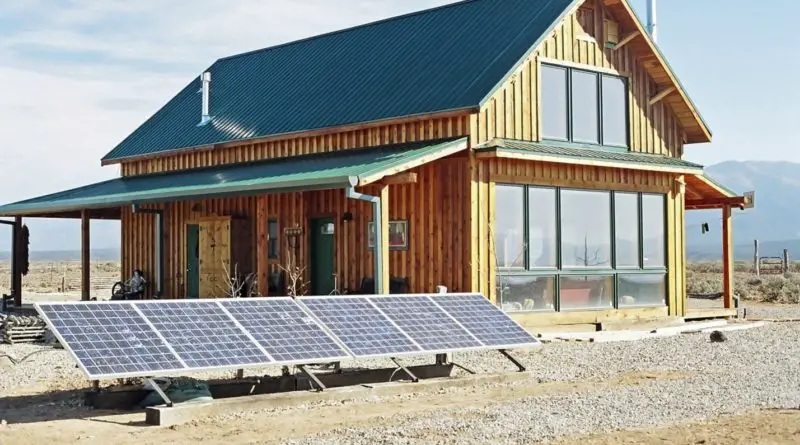Last modified on March 12th, 2022 at 10:18 am
Saving Money and the Planet: Making your Home more Eco-friendly
Saving money is always something that you want to achieve, and if you can do it easily and quickly, even better. One easy way in which you can do this is to make your house eco-friendlier. States across the country offer financial incentives for you to convert to greener energy rather than relying on fossil fuels. Not only can you help save the planet, but you can help save a pretty penny at the same time.
Solar Panels
Solar panels feel like something that you would only see in the distant future. However, they are becoming much more popular to have installed on your home or business. Not only can they save you money on your energy usage, but states are offering particular incentives for you to get involved and take the first steps. Washington state solar incentives, for example, offer a 26% Federal Investment Tax Credit allowing you to claim a dollar-for-dollar credit on your taxes.
A big concern that many people have with solar power is that you are reliant on an everchanging force: the weather. This can be highly worrying during the winter as days get shorter and darker. However, Net Energy Metering is the new way to combat this. When your solar panels produce more energy than what you use, they send that excess to the national grid. When it doesn’t make that minimum energy threshold, it claims back those credits meaning that you are never left in the dark.
Home Insulation
Insulating your home more efficiently is one of the easiest ways to save money on your bills and can make your home more eco-friendly at the same time. Up to 40% of your home’s heat loss can all be attributed to poor insulation. A range of materials can be used to insulate your home, from sheep’s wool to expanding foam, all of which effectively retain heat. Being able to keep your heating on for less time and for that heat to remain in the home will truly enhance your home’s energy efficiency and make a massive dent in your energy bill.
There is such a market out there for sustainable and eco-friendly insulation materials. Cotton and denim are by far the most eco-friendly and effective. Cotton is a natural and easy-to-gather resource that can be packed into your home. It acts as an insect repellent and keeps heat in really well. Denim is also easy to get a hold of and can be made from old jean scraps or clothes. It is recycled into thick slats of denim that can be placed into your walls. Make your home toasty and warm as well as healthy for the planet.
Renewable Heating Systems
As well as making sure that your heat remains in your home, you should perhaps think about changing your heating system to a more natural and renewable source. Heat pumps and wood-fuelled biomass boilers are practical options that can heat your home for less without the need for fossil fuels. Heat pumps used buried pipes to extract heat from the earth, though it will initially make a bit of your garden’s mess.
Along a similar line is an air-source system that can extract heat from the air. They are usually installed around an external wall or in a roof space, which means that you can install them even if your home is more traditional. However, the most effective and natural system is the wood-fuelled biomass boilers. They require a lot of space but can burn pellets and logs to fuel the central heating system, or you can restrict it to one room—a truly efficient and green way to heat your home.
Underfloor Heating
This is an alternative method for heating your home. Underfloor heating usually operates at a temperature a few degrees warmer than the room and circulates warm water through a network of pipes underneath the flooring. Since it works at a low level of temperature, this heating system keeps your energy costs low without you having to wear oversized woolly jumpers in your home all of the time.
Natural Materials
If you are building your home from scratch or just looking to add an extension to your home, building from natural materials is a sure-fire way in which to keep your home airtight and yet breathable. Plasters made of lime and clay are raw and breathable materials. Equally, you can use natural woods to keep your home warm and sustainable. However, don’t feel like this is your only option cork and rubber provide great options as alternatives.
Recycling Water
Rainwater falls from the sky and is wasted on the floor when you could be saving it and with it saving lots of money. Investing in a rainwater harvesting system on your drainpipe can collect water, filter out debris and store the water for use in your home. This can fill your washing machines, water your garden, clean your car and even flush your toilets. If you wanted to take this one step further, you could change your bathroom to a low-flush toilet that uses less water. A low-flow showerhead can use 10 liters less water per minute. Stop watching those pennies filter down your drain.
Eco-Friendly Homes
The world is heading in a more environmentally conscious direction, and it won’t be long before all homes are required to be more and more eco-friendly. Why waste time delaying the inevitable? Get ahead of the bandwagon and make the most of the government-funded schemes to not only save you cash but renovate your home at the same time. You can ensure that you have a home of the future and that it begins to pay for itself with all of the money you save from these drastic but valuable changes to your home.




